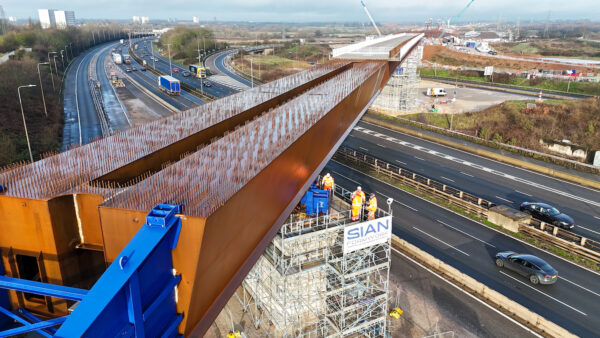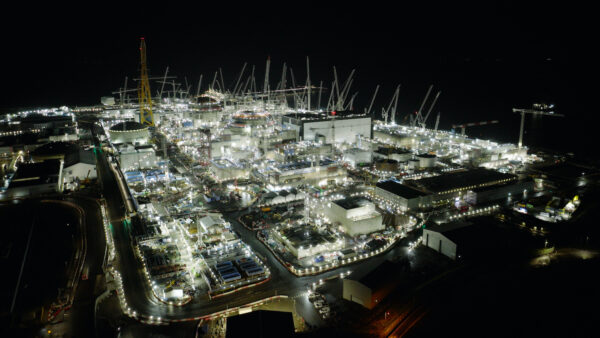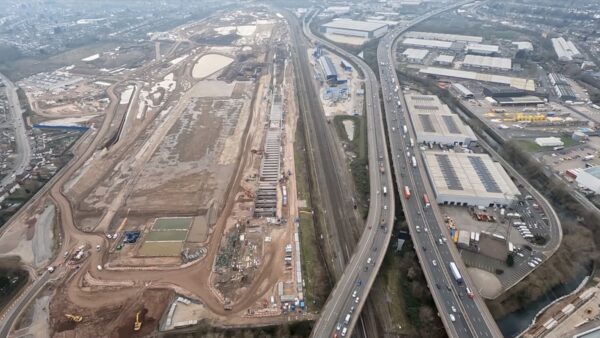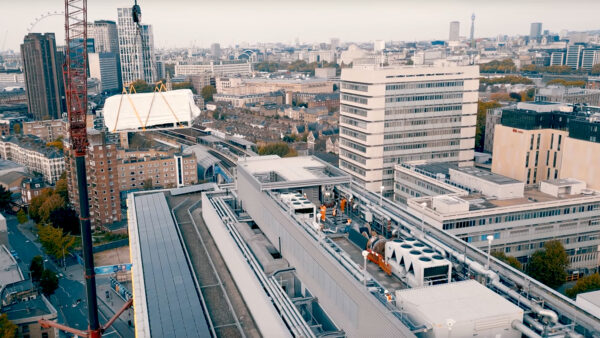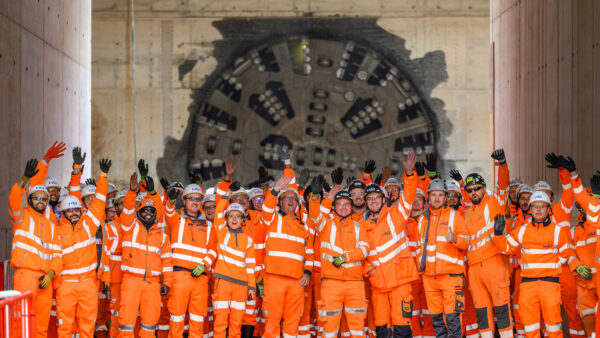So what’s it like ‘driving’ an autonomous car, and why is Aecom investing in the technology? The engineering firm invited CM to London’s Olympic Park to find out.
There’s no windscreen, no steering wheel, no gearstick, no brake or accelerator pedal. The passengers face each other or look out of the window as the London Stadium passes by. The road ahead can be viewed via an on-board screen alongside a digital dashboard.
The car navigates the cycleways around the Olympic Park with no obvious difficulty and when a stray dog runs out in front, automatic sensors bring the vehicle to a smooth halt. In fact, once the novelty of not having the usual controls wears off, traveling in this automatic car begins to feel remarkably normal.
“And that’s exactly the idea,” says George Lunt, technical director at Aecom. “We want passengers – and pedestrians – to feel the automatic car experience is as normal as possible so we can move on to the next testing phase, which is on a public highway.”
Lunt is leading Aecom’s work on Project CAPRI – not to be confused with the popular 1970s Ford coupe – which stands for Connected and Autonomous POD on-Road Implementation. The Olympic Park trials will gather feedback from the public to help shape the technology’s future developments and the regulatory framework. Aecom, part of a 17-member consortium that secured £4.2m of funding from Innovate UK to develop the pods, is involved so “we can be at the forefront of future infrastructure design requirements,” Lunt explains.

Trials in London’s Olympic Park
An earlier version of the CAPRI pod was tested at Filton Airfield near Bristol last year but this one is the “next generation”. Costing £240,000 per unit, the autonomous vehicle is roughly the size of a golf cart, with four passenger seats. The engine uses normal three-phase electric vehicle charging.
On board, a safety steward from kit car manufacturer Westfield, another consortium member, monitors the car’s performance. He checks the front camera view, the dashboard – which shows speed, braking, door controls and other usual dashboard features – plus an iPad which shows the ‘sensor view’: obstacles appear as a series of dots on screen as the pod moves. These are detected through radar and ultrasonic sensors, and there is a bumper strip on the front which results in an emergency stop if touched.
The car can reach a maximum speed of 25mph but is restricted to 5mph for the Olympic Park trial. When it moves, there is a beeping sound similar to a reversing lorry. “We tested various sounds and this one registered the most with the public,” says Lunt.
Similar pods are used on ‘guideways’ but the difference here is there is no dedicated infrastructure. The pod travels on a pre-mapped route around the park, aided by an RTK (real time kinetic) receiver on top of the Here East building to provide a more accurate GPS location, so it is aware of fixed infrastructure but will stop for dynamic obstacles, says Lunt. As well as the dog, these include a mother with pushchair and a couple of cyclists on our tour. A safety marshal walks in front of the car as an added precaution.

The on-board display of the road ahead and ‘dashboard’
“One of the things we’re considering in future is whether the public would prefer the pod to swerve around these obstacles,” says Lunt. Future trials will also allow passengers to provide their destination through voice recognition, he adds, and request other ‘concierge’ services such as in-car music.
The CAPRI approach so far has been to keep the pod easy to understand which the public has responded to positively, says Lunt. “As we move towards full autonomy and navigating busy city centres, it will become more sophisticated,” he adds. Next year’s trial will test the pod on local public highways, interacting with traffic control systems.
One challenge is vehicle classification. “The CAPRI pod doesn’t fit any classification type at present because, among other things, it has no steering wheel,” says Lunt. “So one aim of this pilot is to collect sufficient evidence and detail to support a new vehicle classification for the autonomous pods.”
Another is insurance. “AXA is part of the consortium and give advice and we have a separate insurer,” explains Lunt. “Developing the safety case is a massive amount of work. We have to test certain scenarios, such as a child running out into the path of the pod, numerous times to check if the pod stops in time and in the right way.”

The vehicle can seat four passengers and travel up to 25mph
Aecom is already in talks with clients globally about how automated car technology can be incorporated into their infrastructure design. “We’ve targeted airports and other ‘right use’ candidates,” Lunt says.
Lunt also sees a role for the autonomous vehicles on university campuses, hospital sites or theme parks. “They could provide a novel attraction for early adopters,” he says.
Large housing developments, which are not well-served by public transport are another contender.
“Filton Airfield is being redeveloped with housing by YTL, a CAPRI consortium partner, so there’s another possibility,” says Lunt.
Could the pods be used on a construction project? “Sure, on a massive scheme like Heathrow or Hinkley Point, where there are lots of workers to transport around, from hotel to site,” replies Lunt.
“It’s a way of addressing the first mile/last mile problem for public transportation.”
More broadly, Lunt believes autonomous vehicles will have a “profound effect” on society. “Through these trials, we can channel new technology to shape the future of infrastructure,” he says. “This is part of the journey towards fully autonomous cars on roads.”


